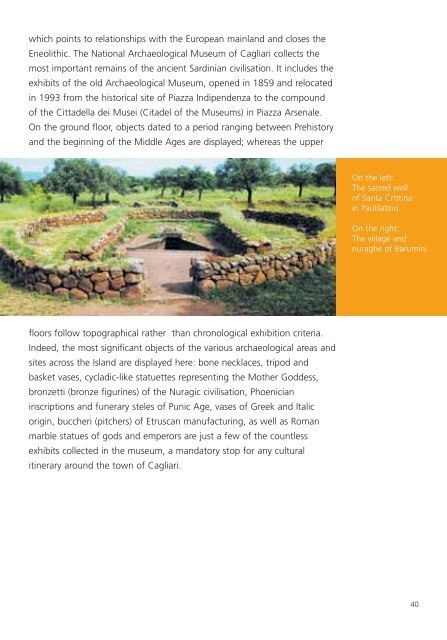Create successful ePaper yourself
Turn your PDF publications into a flip-book with our unique Google optimized e-Paper software.
which points to relationships with the European mainland and closes the<br />
Eneolithic. The National Archaeological Museum of Cagliari collects the<br />
most important remains of the ancient Sardinian civilisation. It includes the<br />
exhibits of the old Archaeological Museum, opened in 1859 and relocated<br />
in 1993 from the historical site of Piazza Indipendenza to the compound<br />
of the Cittadella dei Musei (Citadel of the Museums) in Piazza Arsenale.<br />
On the ground floor, objects dated to a period ranging between Prehistory<br />
and the beginning of the Middle Ages are displayed; whereas the upper<br />
On the left:<br />
The sacred well<br />
of Santa Cristina<br />
in Paulilatino<br />
On the right:<br />
The village and<br />
nuraghe of Barumini<br />
floors follow topographical rather than chronological exhibition criteria.<br />
Indeed, the most significant objects of the various archaeological areas and<br />
sites across the Island are displayed here: bone necklaces, tripod and<br />
basket vases, cycladic-like statuettes representing the Mother Goddess,<br />
bronzetti (bronze figurines) of the Nuragic civilisation, Phoenician<br />
inscriptions and funerary steles of Punic Age, vases of Greek and Italic<br />
origin, buccheri (pitchers) of Etruscan manufacturing, as well as Roman<br />
marble statues of gods and emperors are just a few of the countless<br />
exhibits collected in the museum, a mandatory stop for any cultural<br />
itinerary around the town of Cagliari.<br />
40
















